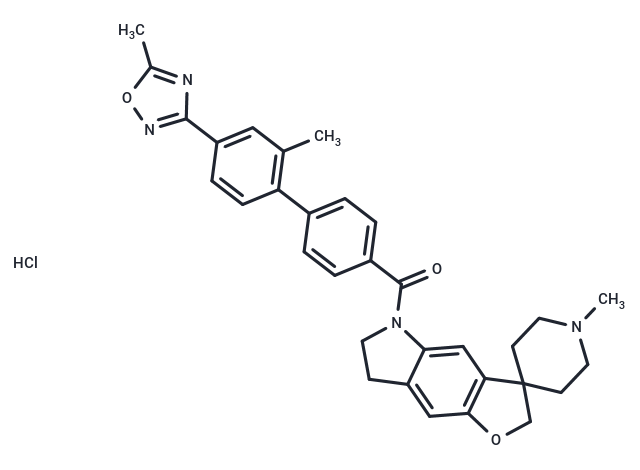Shopping Cart
- Remove All

Your shopping cart is currently empty


| Pack Size | Price | Availability | Quantity |
|---|---|---|---|
| 5 mg | $48 | In Stock | |
| 10 mg | $83 | In Stock | |
| 25 mg | Inquiry | In Stock | |
| 50 mg | Inquiry | In Stock | |
| 1 mL x 10 mM (in DMSO) | $81 | In Stock |
| Description | SB-224289 hydrochloride (SB-224289A) is a selective antagonist of 5-HT1B receptor, with anxiolytic effect. |
| In vitro | SB-224289 demonstrates specific toxin-blocking properties without directly inhibiting the PS synthase enzyme or Cho1p in vitro. It consistently shows efficacy in producing Pap-A resistance at concentrations ranging from 100 μM to 25 μM and uniquely blocks the activity of papuamides, without affecting other membrane disruptors. Although SB-224289 does not protect wild-type cells from KF, it offers protection against TPap-A. It possesses a high affinity, with a pKi of 8, for human cloned 5-HT1B receptors, showing greater than 80-fold selectivity compared to the 5-HT1D receptor and other receptor types. As a potent antagonist (with a pEC50 of 7.9±0.1), SB-224289 induces a rightward shift in the 5-HT concentration response curve (with a pA2 of 8.4±0.2) and significantly enhances [3H]-5HT release in electrically stimulated guinea-pig brain cortex slices at 100 nM and 1 μM concentrations. |
| In vivo | SB 224289 is a potent antagonist with an ED50 of 3.6 mg/kg, p.o in SK&F-99101-induced hypothermia in the guinea-pig. SB 224289 (4 mg/kg, p.o) reverses sumatriptan-induced inhibition of 5-HT release showing that it is also a potent terminal 5-HT autoreceptor antagonist in vivo. SB 224289 (2-16 mg/kg, p.o) does not increase 5-HT levels in the fuinea-pig frontal cortex. However, SB 224289 (4 mg/kg, p.o) causes a significantly increase in levels of 5-HT in the fuinea-pig dentate gyrus[3]. |
| Alias | SB-224289A |
| Molecular Weight | 557.08 |
| Formula | C32H33ClN4O3 |
| Cas No. | 180084-26-8 |
| Storage | Powder: -20°C for 3 years | In solvent: -80°C for 1 year | ||||||||||||||||||||
| Solubility Information | DMSO: 8.1 mg/mL (14.5 mM) | ||||||||||||||||||||
Solution Preparation Table | |||||||||||||||||||||
DMSO
| |||||||||||||||||||||

Copyright © 2015-2024 TargetMol Chemicals Inc. All Rights Reserved.